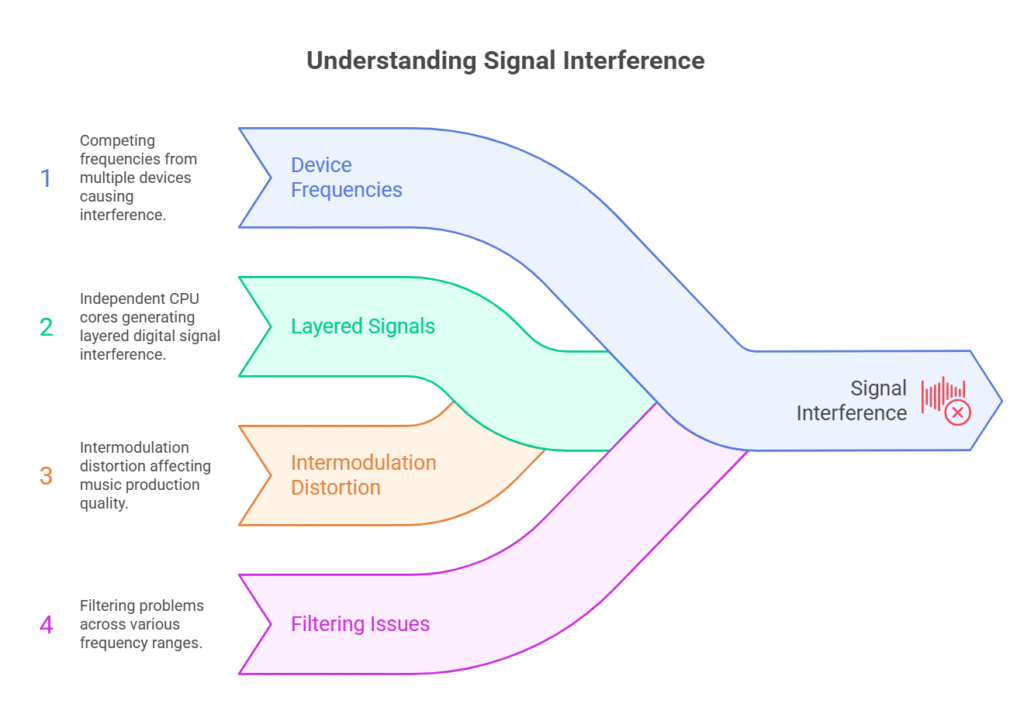Mega Hz more commonly written as MHz stands for megahertz, which is a unit of frequency. It measures how many cycles occur in one second.
- 1 Hz (hertz) = 1 cycle per second
- 1 kHz (kilohertz) = 1,000 Hz
- 1 MHz (megahertz) = 1,000,000 Hz
- 1 GHz (gigahertz) = 1,000 MHz
So when someone says 2.4 mega Hz, they usually mean a frequency of 2.4 million cycles per second. In most real-world uses, this refers to radio frequencies, computer processors, or digital communication systems.
So yes, that router specification or CPU clock speed actually packs real meaning—even if it just looked like techno-babble before.
Mega Hz in Real Life: A Quick Analogy
Imagine frequency like the speed of a drummer:
- One beat per second = 1 Hz
- A thousand beats per second = 1 kHz (superhuman)
- A million beats per second = 1 MHz (now you’re in the tech zone)
If 1 MHz is your microwave humming while heating leftovers, then hz mhz khz are just zoomed-in or zoomed-out views of the same rhythm—just at different resolutions.
Where We See Mega Hz Every Day
Even if you’ve never calculated a frequency in your life, trust me—you live in a mega Hz world.
Here are a few places you’re dealing with megahertz without realizing it:
Wi-Fi Routers
- 2.4 GHz vs. 5 GHz bandwidths
- Technically: 2,400 MHz and 5,000 MHz
Mobile Phones & Computers
- A smartphone CPU may run at 2600 MHz
- Laptops often list “3.6 GHz Turbo,” which equals 3,600 MHz
Radio & Broadcasting
- FM radio stations: 88 MHz to 108 MHz
- Police and emergency services: Tuned to specific mhz in hz ranges
Bluetooth & NFC
- Bluetooth: Operates mostly at 2402 to 2480 MHz
“My kid’s cheap walkie talkie runs on 462 MHz. Didn’t expect my CPU and a toy to have a connection—but frequency is frequency!”
Even misunderstood gadgets live under the rule of “Hz Hz Hz”—frequencies tuning our modern life at the beat of digital drums.
How Mega Hz Relates to Performance
Here’s where people get it a bit twisted.
Just because something has more megahertz doesn’t mean it’s better. Here’s why:
Higher MHz = Better in Some Contexts:
- CPU Clock Speed: More MHz can mean faster processing
- Network Bandwidth: Higher MHz allows for broader channels and faster data
- FM Tuning Precision: Needed for channel separation and quality audio
But Not Always:
- Thermal Limits: Higher MHz means more heat
- Power Consumption: Portable gadgets may downclock (lower MHz) to save battery
- Compatibility: Some audio/visual systems still function best at 44.1 kHz or similar legacy rates
The takeaway? More MHz isn’t bad, or always good. It depends on where and how it’s applied.
Megahertz in Hertz : How to Calculate It
You don’t need a math degree.
1 MHz = 1,000,000 Hz
So if your CPU runs at 2.4 MHz, that’s literally 2,400,000 cycles per second.
Quick Conversions:
| Megahertz (MHz) | Hertz (Hz) |
|---|---|
| 1 MHz | 1,000,000 Hz |
| 2.4 MHz | 2,400,000 Hz |
| 120 MHz | 120,000,000 Hz |
| 0.5 MHz | 500,000 Hz |
To reverse it:
- Take any hz value and divide by 1,000,000 to get mhz in hz
Hz Hz Hz: When Multiple Frequencies Collide
Ever heard the phrase “hz hz” repeated? It’s not a glitch—it’s just shorthand or casual talk in audio and electronics.
People might refer to “Hz Hz Hz” when discussing:
- Multiple devices generating competing frequencies
- Layered digital signals (e.g., multiple CPU cores clocking independently)
- Intermodulation distortion in music production
- Filtering issues across hz mhz khz ranges
In short, multiple Hz aren’t necessarily bad—but they do require coordination.

DIY Applications of Mega Hz in 2025
Tech hobbyists and tinkerers are booming in 2025—and mega Hz measurements are fundamental.
Here’s how:
Microcontroller Projects
Arduino and Raspberry Pi run at 16-120 MHz. Clock speed matters for sensor readings, display refresh, and pulse-width modulation (PWM) training.
RF Transmitters
Ham radio lovers actively tune signals between 144 MHz and 800 MHz — handling MHz-into-Hz calculations all day.
Software Development
Building apps tuned to audio processing? Your sample rate and buffer sizes depend on understanding hz mhz khz flow.
Real Use Case :Frequencies in Gaming
A user on a tech forum once wrote:
“Upgraded from 2400 MHz RAM to 3600 MHz. Game load times dropped, FPS stabilized. Didn’t even realize RAM frequency affected actual gameplay.”
In this context, mega Hz made a real-world impact—and maybe made a win or two a little easier.
But Is It Just Buzzwords in Marketing?
In some areas—yes.
Laptops with “3.9 GHz Turbo Boost” sound impressive. But if actual thermal performance throttles the chip quickly, your device may operate at 2.1 GHz (2,100 MHz) under load most of the time.
So when manufacturers throw in mega hz numbers like candy, ask:
- What’s the base frequency?
- For how long is the peak reachable?
- Is cooling adequate to sustain it?
FAQs
Q. What is the difference between MHz and Hz?
A. MHz stands for megahertz, which equals 1 million Hertz (Hz). Think of Hz as the base unit, and MHz as a scaled-up version for high-speed processes.
Q. How many Hz are in 1 MHz?
A. Exactly 1,000,000 Hz. You can multiply MHz by 1,000,000 or just shift the decimal six places right to get Hz.
Q. What is better: 2.4 GHz or 5 GHz WiFi?
A. 5 GHz WiFi (which is 5,000 MHz) offers faster speeds but shorter range. 2.4 GHz provides better wall penetration but slower throughput.
Q. Does MHz affect gaming performance?
A. Yes. Faster MHz in RAM, CPU, and GPU clocks can improve game performance but only within the limits of system design and compatibility.
Megahertz vs Kilohertz vs Gigahertz
Let’s quickly compare:
| Unit | Symbol | Equivalent |
|---|---|---|
| Hertz | Hz | 1 cycle/sec |
| Kilohertz | kHz | 1,000 Hz |
| Megahertz | MHz | 1,000,000 Hz |
| Gigahertz | GHz | 1,000,000,000 Hz |
So if you’re seeing hz mhz khz together on a device spec sheet, know that it reflects different layers or ranges of frequency handling.
Experimental Trends in 2025: What’s Coming Next?
Frequency-based innovation is accelerating.
Terahertz Tech
Yes… THz. Terahertz radiation is being explored in next-gen medical imaging, spectroscopy, and ultra-fast communications.
Audio Precision
Studio-grade DACs now upsample at 192 kHz or higher—that’s 192,000 Hz—to deliver ghost-free, resonance-busting clarity.
6G Networking
While 5G maxes around 40 GHz, researchers are pushing research into 110 GHz and beyond for 6G and ultra-wideband IoT.
Final Thoughts
It’s easy to overlook numbers on spec sheets. But frequency tells us more than just how fast a processor runs or how signals bounce off satellites. It defines the heartbeat of every digital process around us.
CLICK HERE FOR MORE BLOG POSTS
There’s a certain weight in the words John Authers writes—not just because of what he knows, but how he shares it. His voice doesn’t just echo facts; it builds meaning. In a world overwhelmed by rushed opinions and robotic summaries, John’s writing feels… different. It feels lived-in, thoughtful, and deeply human.
Readers don’t turn to John for headlines—they come for context. They come for that rare blend of clarity, insight, and emotional depth that turns financial journalism into something closer to storytelling. His reflections on markets, geopolitics, or human behavior aren’t just readable—they’re relatable.
What sets John apart isn’t just his experience (though he has plenty of it). It’s his ability to pause, reflect, and explain the why behind the what. He writes like someone who’s been in the room where it happens—but never forgets the reader who hasn’t.
In 2025, when AI churns out articles in milliseconds, John Authers still writes like a human—and that, more than anything, is what makes his work worth reading.











